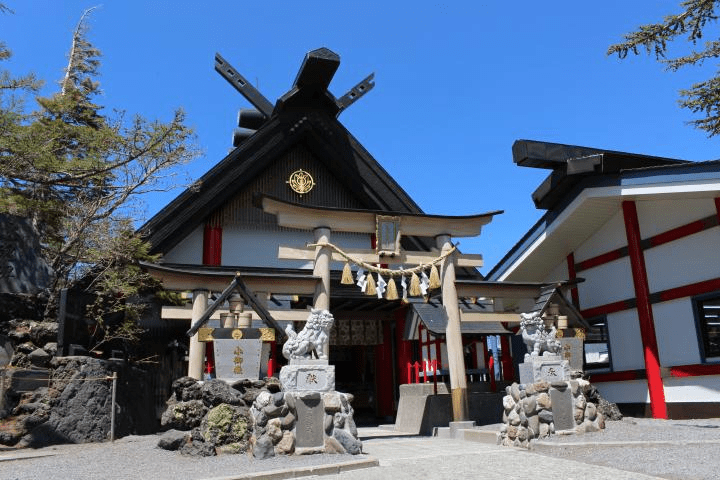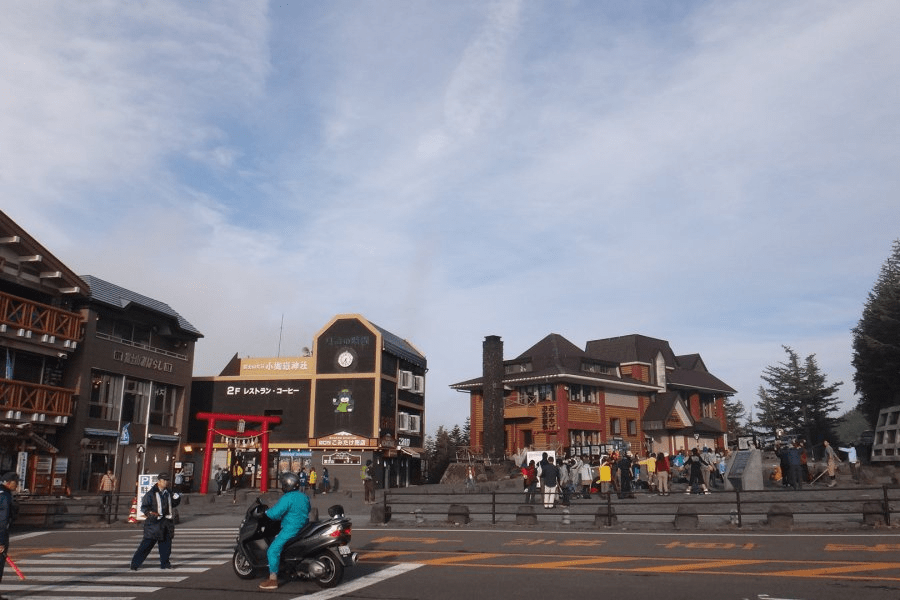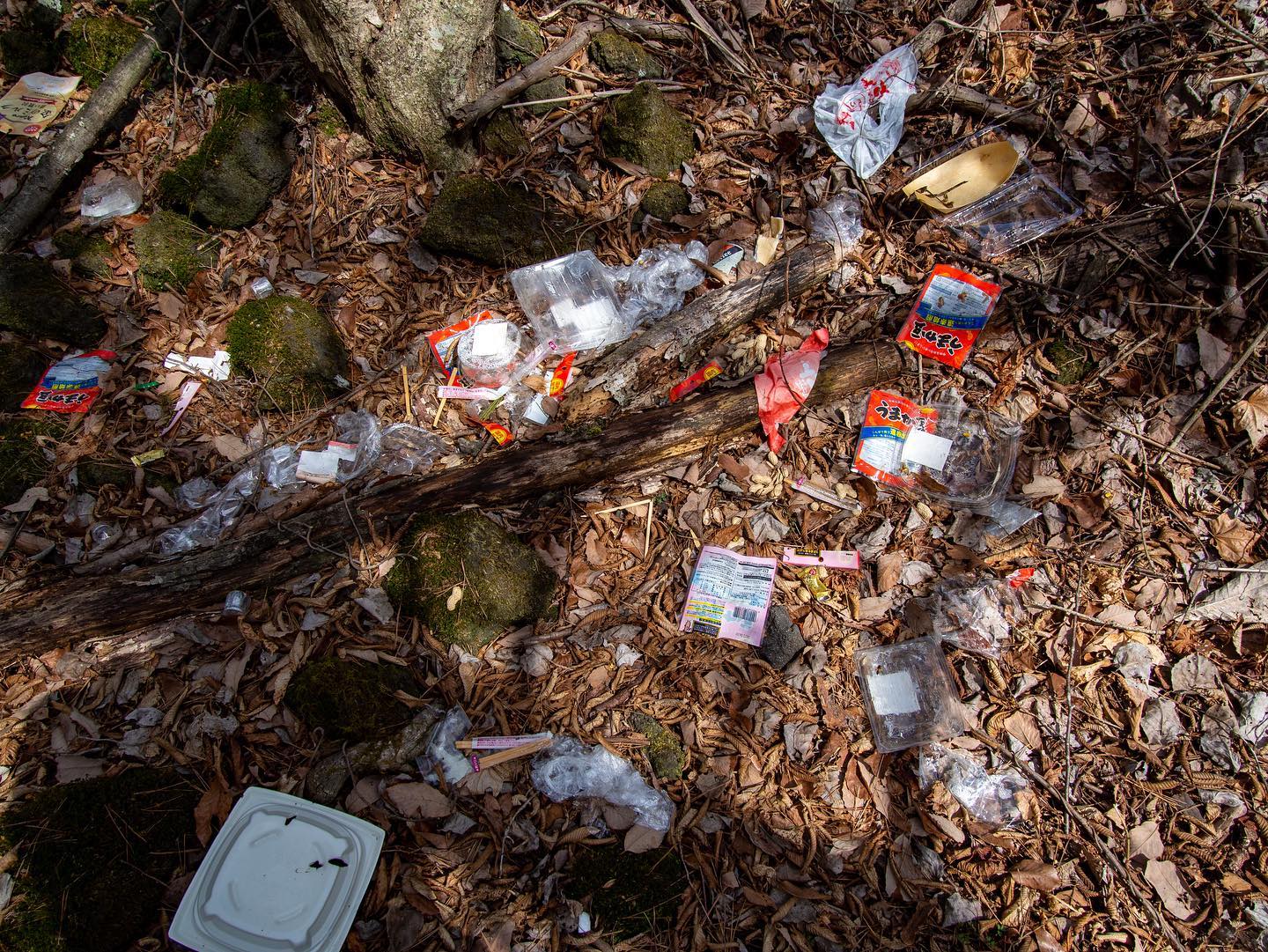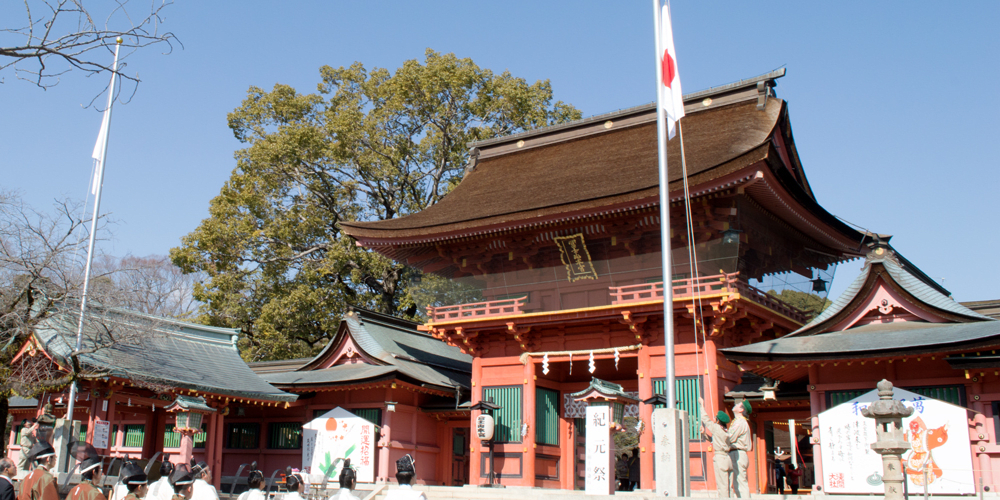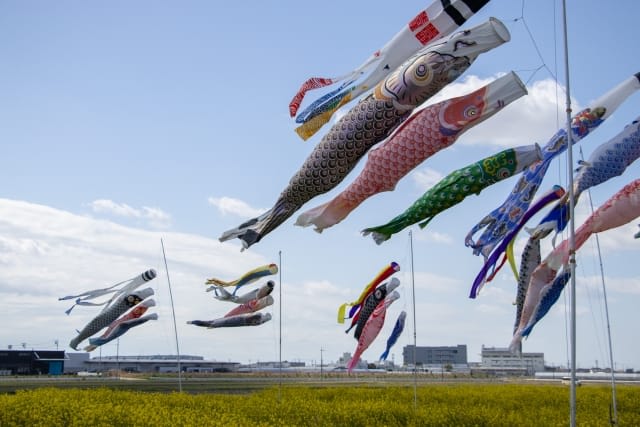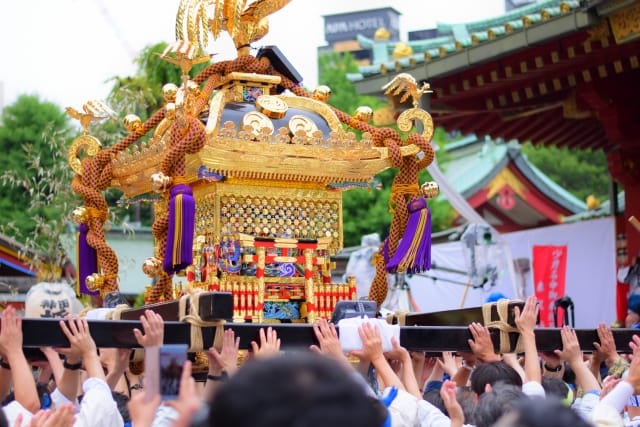Fujisan Komitake Shrine: Explore the Sacred History and Legends at Mount Fuji's Fifth Station
Due to Mount Fuji's massive size and the scattered tourist spots around its base, planning an efficient itinerary can be quite challenging for visitors. I remember when I first visited the Mount Fuji area, I wasn't able to efficiently visit the surrounding attractions, which left me feeling like I hadn't fully experienced what the region had to offer.
As a result, tours that offer an efficient and immersive way to experience the Mount Fuji area are gaining popularity. Private tours led by guides who know the Mount Fuji region inside and out are especially in demand, as they're known for allowing small groups to fully enjoy both the cultural and natural attractions around the mountain.
Magical Trip, which boasts having the #1 rated tour of 2024, launched a new tour in November 2024 called "Mt. Fuji Full-day Nature Guided Tour with a Private Chartered Car." On this tour, a driver and an expert local guide take you to carefully selected must-see spots around Mt. Fuji while explaining the local culture and traditions.

Since the tour starts and ends at your Tokyo hotel, you can explore the Mt. Fuji area hassle-free. If you're interested in Mt. Fuji but don't have time for an extended stay in the area, consider this efficient sightseeing tour.
Introduction
Mt. Fuji, standing at 3,776 meters, is Japan's highest mountain located between Yamanashi and Shizuoka prefectures.
Mt. Fuji has long been revered as a sacred entity, with numerous shrines and temples built around it. It has been featured in many paintings and literature, drawing global attention as a symbol of Japanese culture.
Furthermore, Mt. Fuji offers hiking routes suitable for beginners, attracting many tourists who enjoy climbing during the summer months of July to August.
Today, we'll introduce one of the representative shrines around Mt. Fuji: the Fujisan Komitake Shrine.
What is Fujisan Komitake Shrine?
Fujisan Komitake Shrine is located at the 5th station, halfway up Mt. Fuji. Built in 937, it has been worshipped as a guardian deity watching over the safety of Mt. Fuji climbers.
Additionally, Fujisan Komitake Shrine is the closest shrine to Mt. Fuji accessible by public transportation, offering panoramic views of the Fuji Five Lakes and Asagiri Kogen (Highland).
Why are shrines special to Japanese people?
Shrines have been cherished by Japanese people for over 1,000 years as spiritual anchors. They have served not only as religious buildings for prayer but also as community centers where people create connections.
Moreover, shrines have been used as places of solace for Japanese people regardless of their specific religious beliefs. In modern times, many people visit shrines during life's milestone events such as childbirth, marriage, and New Year's celebrations to offer their gratitude and wishes.
5 Attractions of Fujisan Komitake Shrine
Sacred Atmosphere and Deep Historical Significance as Mt. Fuji's Guardian Deity
Source:Yamanashi
The first attractive point of Fujisan Komitake Shrine is its long history and sacred atmosphere. Since its establishment in 937, it has been known as a shrine worshipped by people who consider Mt. Fuji is a sacred place.
At Fujisan Komitake Shrine, you'll pray with Mt. Fuji's peak as your backdrop, creating a mystical atmosphere. Take your time to walk and experience the mysterious ambiance not only of the shrine but also along the approach path.
It is said that visiting the shrine brings power for longevity, safe childbirth, and finding a romantic partner.
Ideally Located at Mt. Fuji's 5th Station on the Subaru Line for Starting Your Climb
Source:Fujiyoshida City Guide
The Fujisan Komitake Shrine is situated at the 5th Station, the primary starting point for climbing routes. It's exceptionally accessible, just a 50-minute bus ride from Kawaguchiko Station.
Since many hiking routes for both beginners and advanced climbers begin at the 5th Station, numerous visitors come to pray for safe climbing at the Fujisan Komitake Shrine. With its convenient location right next to the 5th Station, why not combine your shrine visit with a hiking adventure?
Additionally, the 5th Station offers various facilities, including souvenir shops, restaurants, and observation decks, making it worth exploring before or after your shrine visit.
Outstanding Views of Mt. Fuji and Lake Kawaguchi
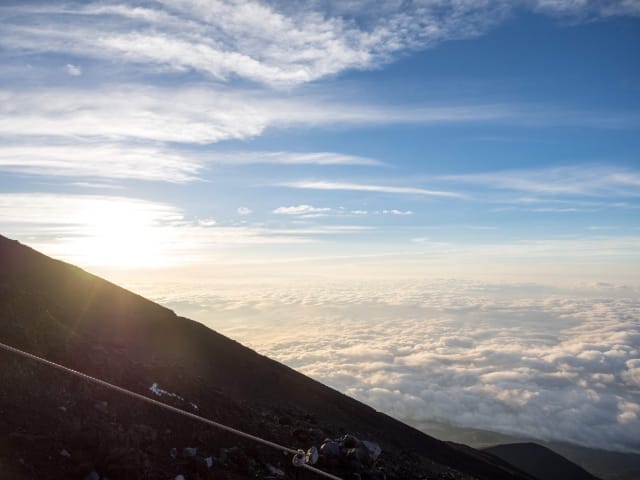
Located at an elevation of 2,305 meters, the Fujisan Komitake Shrine's observation deck offers spectacular views of Mt. Fuji and Lake Kawaguchi. On clear days, visitors can enjoy panoramic views of the Fuji Five Lakes and Asagiri Kogen plateau. If you're lucky, you might even witness a sea of clouds. When I visited for sunrise, I was treated to a mystical landscape.
The shrine also features a plaza with benches where you can look up at Mt. Fuji, perfect for those who want to leisurely admire the mountain's grandeur.
Extensive Selection of Cute Mt. Fuji-Themed Charms and Souvenirs
Source:Yamanashi
The Fujisan Komitake Shrine is famous for its Mt. Fuji-shaped "Omamori" (lucky charms). These charms are believed to be imbued with Mt. Fuji's power and are said to grant wishes for traffic safety, business success, and academic achievement. Red Mt. Fuji charms and convenient card-sized charms for financial fortune are also recommended.
Visitors can also receive a "Goshuin" (shrine stamp), which features Mt. Fuji and cherry blossom illustrations alongside the shrine's name, commemorating their visit. Don't forget to check these exclusive souvenirs available only at this location.
Local Tengu Legends and Related Spots

Tengu are spiritual beings from Japanese folklore, characterized by their long noses and red faces. Known to inhabit mountains and forests, they are regarded as powerful guardian spirits of nature and mountains.
The area around the Fujisan Komitake Shrine is called "Tengu no Niwa" (Tengu's Garden) and is legendarily believed to have been under Tengu control. At the shrine, Tengu are enshrined as path-opening deities and are revered as guardian spirits of mountain climbers.
The shrine displays various Tengu-related items, with the highlight being a massive 375kg axe supposedly used by Tengu. It's believed that touching the axe grants power, so be sure to try it during your visit.
Purification Rituals are Performed on Mountain Opening Day, July 1st
Source:Yamanashi
At Fujisan Komitake Shrine, a festival called the Kaizan Festival is held every year on July 1st, marking the start of the climbing season.
During the Kaizan Festival, a purification ceremony is performed to celebrate the opening of the mountain climbing season. Participants carry a Mikoshi (portable shrine) shaped like Mount Fuji through the shrine grounds and around the 5th station of Mount Fuji. Festival-goers can enjoy the celebration by walking alongside those carrying the Mikoshi.
The sight of the vermillion Mikoshi being carried by people in traditional costumes at an altitude of 2,300 meters creates a distinctly Japanese and sacred atmosphere that visitors should not miss.
3 Things to Check Before Visiting Mount Fuji During Climbing Season
Weekends and Obon Period are Crowded
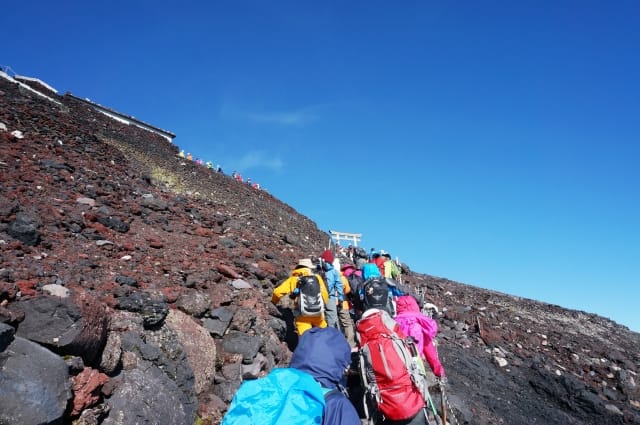
Mount Fuji becomes very crowded during weekends and the Obon period (mid-August). When planning your schedule, keep this in mind. Large crowds of climbers can make it difficult to walk at your own pace and take breaks, and may increase the risk of injury.
For a safer climbing experience, it's recommended to avoid peak times and dates or climb on weekdays. The Official Mount Fuji Climbing website provides a crowding forecast calendar that you can use to plan your visit.
Official Mount Fuji Climbing Website: https://www.fujisan-climb.jp/risk/congestion.html
Mountain Hut Reservations are Required (Camping Prohibited)

Tent camping is prohibited on Mount Fuji, so you must make advance reservations at mountain huts if you plan to stay overnight.
Mountain huts are available at every station (approximately 1-2 huts per station). The popular Yoshida and Fujinomiya routes tend to fill up quickly, so make your reservations early once you've decided on your climbing dates.
Mountain huts provide sleeping bags for overnight stays, so you don't need to bring your own. However, it's recommended to bring warm clothing as temperatures drop significantly at night.
Environmental Issues are Worsening Due to Poor Climber Etiquette
Source:Mt.Fuji Official website
Mount Fuji is facing serious environmental problems, primarily due to illegal dumping of garbage by climbers. The area above the 5th station is legally designated as a specially protected zone. When climbing, remember these important points:
* Don't bring or leave garbage
* Pick up any garbage you notice
* Use toilet paper or water-soluble paper instead of tissues
* Don't take any stones from Mount Fuji (prohibited by law)
Access to Fujisan Komitake Shrine
Address: Yoshidaguchi Climbing Trail, 5617 Komitakeshita, Kamiyoshida, Fujiyoshida City
Access:
<By Car> 50 minutes by car from JR Fujikyu Line Kawaguchiko Station
<By Bus> 50 minutes by bus from JR Fujikyu Line Kawaguchiko Station (Take the bus bound for "Fuji Subaru Line 5th Station")
Official Website: http://www.fujisan-jinja.com/yamanashi/fujisan_komitake/index.php
3 Shrines You Should Visit Along with Fujisan Komitake Shrine
FUJISANHONGU SENGENTAISHIA
Source:Official website
There are other shrines related to Mount Fuji in the vicinity of Fujisan Komitake Shrine.
FUJISANHONGU SENGENTAISHIA is located in Fujinomiya City, Shizuoka Prefecture, and serves as the principal shrine among more than 1,300 Sengen Shrines across Japan.
FUJISANHONGU SENGENTAISHIA is known for its spiritual powers related to safe childbirth, matchmaking, and fertility, attracting many female visitors. A highlight is the Wakutama Pond, a nationally protected natural heritage site where Mount Fuji's snowmelt water springs forth.
In spring, cherry blossoms bloom within the shrine grounds, creating a beautiful collaboration with the vermillion shrine buildings. This shrine is recommended for women and those who want to enjoy nature.
Address: 1-1 Miya-cho, Fujinomiya City, Shizuoka Prefecture
Hours: 5:00-20:00 (Nov-Feb: 6:00-19:00, Mar & Oct: 5:30-19:30)
Closed: Never
Phone: 0544-27-2002
Official Website: http://www.fuji-hongu.or.jp/
Kawaguchi Asama Shrine
Source:QOONEL+
Kawaguchi Asama Shrine, built in 864 to appease Mount Fuji's eruption, is located in Minamitsuru, Yamanashi Prefecture. It is recognized as one of the component properties of the World Heritage Site Mount Fuji and is said to possess powers for successful relationships and family prosperity.
My recommended highlight at Kawaguchi Asama Shrine is the "Tenku no Torii" (Heavenly Gate), reached after a 30-minute walk up a mountain path. This spot has become a popular photography location as it offers a spectacular view of Mount Fuji through the torii gate.
I recommend visiting Kawaguchi Asama Shrine if you're interested in photography or World Heritage sites.
Address: 1 Kawaguchi, Fujikawaguchiko-machi, Minamitsuru-gun, Yamanashi Prefecture
Hours: 24 hours
Closed: Never
Phone: 0555-76-7186
Official Website: https://asamajinja.or.jp/
Arakura Fuji Sengen Shrine
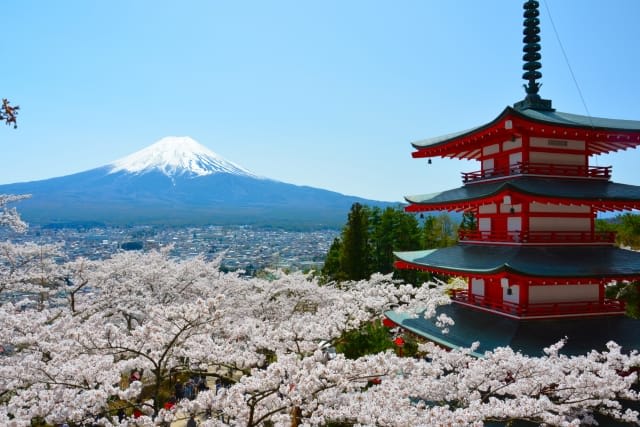
Arakura Fuji Sengen Shrine is located halfway up Mount Arakurayama in Fujiyoshida City, Yamanashi Prefecture. It is known for its powers in warding off evil, safe childbirth, and child-rearing.
The most attractive point of Arakura Fuji Sengen Shrine is the simultaneous view of Mount Fuji and the Goju no to (five-story pagoda). It's particularly spectacular in spring when you can enjoy Mount Fuji, the five-story pagoda, and cherry blossoms all at once, making it my personal favorite.
Arakura Fuji Sengen Shrine also features many other attractions, including a tree believed to have child-rearing powers and beautiful stone steps leading to the shrine.
This shrine is recommended for those who want to experience quintessential Japanese scenery.
Address: 2-4-1 Arakura, Fujiyoshida City, Yamanashi Prefecture
Hours: 24 hours
Closed: Never
Phone: 0555-23-2697
Official Website: https://www.arakurafujisengen.com/
